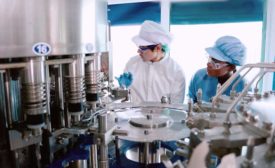Risk Assessment
Beneficial AI: Safe, Secure, and Trustworthy Artificial Intelligence for Food Safety
AI can help ensure food safety by analyzing patterns and trends that might not be readily apparent to human analysts
February 13, 2024
Food Safety and Quality Considerations in the Production of Plant-Based Meat Alternatives
Each step during manufacturing and distribution introduces potential challenges and opportunities for maintaining food safety and quality of plant-based meat products
February 13, 2024
Root Cause Analysis: Putting It to Work for You
Investing the time and effort to clearly define the problem that needs to be solved is a critical step in getting to the true root cause
Deb Kane M.S.
John Butts Ph.D.
Natalie Dyenson
Brendan A. Niemira Ph.D.
Tim King M.S., M.A.
Tim Jackson Ph.D.
February 9, 2024
A Future View of AI-Enhanced Biosurveillance and Comprehensive Food Safety Programs
A future-oriented perspective on comprehensive food safety programs that harness multi-layered sensor technology and artificial intelligence
December 12, 2023
Never miss the latest news and trends driving the food safety industry
eNewsletter | Website | eMagazine
JOIN TODAY!Copyright ©2024. All Rights Reserved BNP Media.
Design, CMS, Hosting & Web Development :: ePublishing










